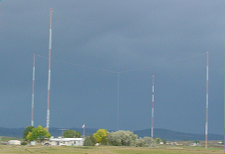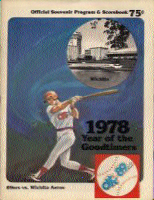http://www.rhci-online.net/radiogram/radiogram.htm

|
|
http://www.rhci-online.net/radiogram/radiogram.htm

|
|
|
RSID: <<2018-09-08T15:30Z MFSK-64 @ 9400000+1500>>
For photos of American rail history, see american-rails.com, or
Please send reception report to themightykbc@gmail.com
|
|

RSID: <<2018-09-08T16:01Z MFSK-32 @ 9400000+1500>>
Welcome to program 64 of Shortwave Radiogram.
I'm Kim Andrew Elliott in Arlington, Virginia USA.
Here is the lineup for today's program, in MFSK modes as noted:
1:36 MFSK32: Program preview (now)
2:58 World' largest offshore wind farm launches*
8:01 MFSK128: Bugs will eat more food as temperatures rise*
12:16 MFSK64: Proposed shutdown of WWV, WWVB, WWVH*
18:08 Maersk installs rotating sails on its ship Pelican*
22:03
Testsendungen von Radio Taiwan International*
24:15 Images of the week*
28:23 MFSK32: Closing announcements
* with images(s)
Please send reception reports to
radiogram@verizon.net
And visit http://swradiogram.net
Twitter:
@SWRadiogram
From Deutsche Welle:
World's largest offshore wind farm launches off England coast
Danish energy group Orsted has
officially opened the Walney
Extension project, the biggest
offshore wind farm in the
world. The farm will cement Britain's
role as the largest
offshore wind market.
6 September 2018
The Walney Extension project opened off northwest England
Thursday, boasting a capacity of 659 megawatts (MW). This makes
it the world's biggest offshore wind park in operation,
overtaking the London Array off England's east cost with a
capacity of 630 megawatts.
The Walney Extension produces enough electricity to power almost
600,000 homes. It's made up of 87 turbines built by Siemens
Gamesa and MHI Vestas, the largest turbines of their kind in
operation globally.
The wind farm covers an area of 145 square kilometers (55 square
miles), the equivalent of 20,000 football pitches.
Strong winds and subsidies
Orsted UK Managing Director Matthew Wright told Reuters that
Britain's offshore success was due to a combination of strong
wind speeds and shallow waters, adding that it was also due to
continued support from the government.
"For the last 10 years, governments of all colors have supported
renewable energy and offshore wind in the UK, leading to a
thriving industry," Wright said.
Britain is the world's biggest offshore wind market, hosting 36
percent of globally installed wind capacity, according to data
from the global Wind Energy Council.
Walney Extension is a shared-ownership project between Danish
energy group Orsted and two Danish pension funds, PFA and PKA.
https://www.dw.com/en/worlds-largest-offshore-wind-farm-launches-off-england-coast/a-45380014
Image: Turbines at the Walney Wind Farm ...
Sending Pic:225x162C;

Shortwave Radiogram now changes to MFSK128 ...
RSID: <<2018-09-08T16:08Z
MFSK-128 @
9400000+1500>>
This is Shortwave Radiogram in MFSK128
Please send reception reports to
radiogram@verizon.net
From Futurity.org:
As temperatures rise, bugs will eat more of our food
Posted by James Urton
University of Washington
4 September 2018
Scientists have already warned that climate change likely will
impact the food we grow. Rising global temperatures and more
frequent "extreme" weather events like droughts and floods are
expected to negatively affect our ability to produce food.
Now new research is showing that climate change is expected to
accelerate rates of crop loss due to the activity of something
else - hungry insects. A paper in Science reports that insect
activity in today's temperate, crop-growing regions will rise
along with temperatures.
The rise in insect activity will boost worldwide losses of rice,
corn, and wheat by 10-25 percent for each degree Celsius that
global mean surface temperatures rise, researcher say. Just a
2-degree Celsius rise in surface temperatures will push the total
losses of these three crops each year to approximately 213
million tons.
Food insecurity
"We expect to see increasing crop losses due to insect activity
for two basic reasons," says co-lead and corresponding author
Curtis Deutsch, an associate professor of oceanography at the
University of Washington.
"First, warmer temperatures increase insect metabolic rates
exponentially. Second, with the exception of the tropics, warmer
temperatures will increase the reproductive rates of insects. You
have more insects, and they're eating more."
In 2016, the United Nations estimated that at least 815 million
people worldwide don't get enough to eat. Corn, rice, and wheat
are staple crops for about 4 billion people, and account for
about two-thirds of the food energy intake, according to the UN
Food and Agriculture Organization.
"Global warming impacts on pest infestations will aggravate the
problems of food insecurity and environmental damages from
agriculture worldwide," says coauthor Rosamond Naylor, a
professor in the earth system science department at Stanford
University and founding director of the Center on Food Security
and the Environment.
"Increased pesticide applications, the use of GMOs, and agronomic
practices such as crop rotations will help control losses from
insects. But it still appears that under virtually all climate
change scenarios, pest populations will be the winners,
particularly in highly productive temperate regions, causing real
food prices to rise and food-insecure families to suffer."
Insect metabolism
To investigate how insect herbivory on crops might affect our
future, researchers looked at decades of laboratory experiments
of insect metabolic and reproductive rates, as well as ecological
studies of insects in the wild. Unlike mammals, insects are
ectothermic, which means that their body temperature tracks the
temperature of their environment. Thus, the air temperature
affects oxygen consumption, caloric requirements, and other
metabolic rates.
The past experiments that the team studied show conclusively that
increases in temperature will accelerate insect metabolism, which
boosts their appetites, at a predictable rate. In addition,
increasing temperatures boost reproductive rates up to a point,
and then those rates level off at temperature levels akin to what
exist today in the tropics.
Deutsch and his colleagues found that the effects of temperature
on insect metabolism and demographics were fairly consistent
across insect species, including pest species such as aphids and
corn borers. They folded these metabolic and reproductive effects
into a model of insect population dynamics, and looked at how
that model changed based on different climate change scenarios.
Those scenarios incorporated information based on where corn,
rice and wheat—the three largest staple crops in the world—are
currently grown.
"Temperate regions are currently cooler than what's optimal for
most insects. But if temperatures rise, these insect populations
will grow faster," says coauthor Scott Merrill, a researcher at
the University of Vermont's College of Agriculture and Life
Sciences and the Gund Institute for Environment. "They will also
need to eat more, because rising temperatures increase insect
metabolism. Together, that's not good for crops."
For a 2-degree Celsius rise in global mean surface temperatures,
their model predicts that median losses in yield due to insect
activity would be 31 percent for corn, 19 percent for rice, and
46 percent for wheat. Under those conditions, total annual crop
losses would reach 62, 92, and 59 million tons, respectively.
The researchers observed different loss rates due to the crops'
different growing regions, Deutsch says. For example, much of the
world's rice is grown in the tropics. Temperatures there are
already at optimal conditions to maximize insect reproductive and
metabolic rates. So, additional increases in temperature in the
tropics would not boost insect activity to the same extent that
they would in temperate regions—such as the United States' corn
belt.
Farmers and governments could try to lessen the impact of
increased insect metabolism, such as shifting where crops are
grown or trying to breed insect-resistant crops, the researchers
say. But these alterations will take time and come with their own
costs.
"I hope our results demonstrate the importance of collecting more
data on how pests will impact crop losses in a warming
world—because collectively, our choice now is not whether or not
we will allow warming to occur, but how much warming we're
willing to tolerate," Deutsch says.
Joshua Tewksbury, director of Future Earth at the University of
Colorado, Boulder, is the paper's co-lead author. The National
Science Foundation and the Gordon and Betty Moore Foundation
funded the work.
https://www.futurity.org/temperature-climate-change-insects-crops-1855202/
See also:
http://science.sciencemag.org/content/361/6405/916
Sending Pic:225x151C;

Shortwave Radiogram now changes to MFSK64 ...
RSID: <<2018-09-08T16:12Z MFSK-64 @ 9400000+1500>>
This is Shortwave Radiogram in MFSK64
Please send reception reports to
radiogram@verizon.net
VOA NEWS
Time May Be Running Out for Millions of Clocks
Steve Herman, W7VOA
2 August 2018
WHITE HOUSE - President Donald Trump's administration wants to
shut down U.S. government radio stations that announce official
time, a service in operation since World War II.
WWV and WWVB in the state of Colorado and WWVH on the island of
Kauai in the mid-Pacific state of Hawaii, send out signals that
allow millions of clocks and watches to be set either manually or
automatically.
WWVB continuously broadcasts digital time codes, using very long
electromagnetic waves at a frequency of 60 kilohertz, which are
automatically received by timekeeping devices in North America,
keeping them accurate to a fraction of a second.
"If you shut down these stations, you turn off all those clocks,"
said Don Sullivan, who managed the National Institute of
Standards and Technology (NIST) stations between 1994 and 2005.
GPS not good enough
Some argue the terrestrial time signal have been rendered
obsolete by the government's Global Positioning System, whose
satellites also transmit time signals, but users disagree, noting
GPS devices must have an unobstructed view of a number of
satellites in space to properly function.
"Sixty kilohertz permeates in a way GPS can't," Sullivan told
VOA, explaining that WWVB's very low frequency signal can be
received inside buildings and it is an important backup to GPS in
case adversaries attempt to interfere with the satellite
radio-navigation system.
WWV and WWVH broadcast on a number of shortwave frequencies,
meaning their signals can be received globally.
The Trump administration proposes, in its Fiscal 2019 budget to
Congress, cutting $26.6 million and 136 jobs from NIST's
fundamental measurements, quantum science and measurement
dissemination activities.
The budget document acknowledges that in addition to
synchronizing clocks and watches, the time signals are also used
in appliances, cameras and irrigation controllers.
"It's crazy," Sullivan said of the proposed cut. "It's absolutely
insane."
NIST officials say they cannot comment on budget matters. The
White House referred questions about NIST's funding to the Office
of Management and Budget, which has not responded to an inquiry
from VOA.
Oldest continuously operating radio station
WWV, the oldest continuously operating radio station in the
United States, first went on the air from Washington in 1919,
conducting propagation experiments and playing music. In the
early years, it also transmitted - via Morse code - news reports
prepared by the Agriculture Department.
The station subsequently was moved to Maryland and then to
Colorado in 1966. WWV has been a frequency standard since 1922
and has disseminated official U.S. time since 1944.
All of the NIST stations rely on extremely precise atomic clocks
for the accuracy of their time signals.
WWV, at two minutes past every hour, also transmits a 440 hertz
note (A above middle C), something it has done since 1936,
allowing musicians to tune their pianos and other instruments.
All three stations retain a huge following worldwide, according
to Sullivan.
WWV and WWVH broadcasts can also be heard by telephone and about
2,000 calls are received daily, according to NIST. (To listen to
the broadcasts by phone, dial +1-303-499-7111 for WWV and
+1-808-335-4363 for WWVH.)
The telephone time-of-day service also is used to synchronize
clocks and watches, and for the calibration of stopwatches and
timers (although slightly less accurate than radio reception).
Tom Kelly, an amateur radio operator in the state of Oregon, has
launched a petition to try to save the stations. His goal is to
collect 100,000 online signatures from U.S. residents by
September 15 that would compel a response from the White House.
Kelly's petition calls the stations "an instrumental part in the
telecommunications field, ranging from broadcasting to scientific
research and education," noting their transmissions of marine
storm warnings, GPS satellite health reports and specific
information about solar activity and radio propagation
conditions.
Britain, China, Germany, Japan and Russia also have very low
frequency time transmissions, but their stations are too distant
to automatically set clocks in the United States.
Among other proposed cuts for NIST are its environmental
measurement projects measuring the impact of aerosols on
pollution and climate change and gas reference materials used by
industry to reduce costs of complying with regulations and the
Urban Dome research grants for determining how to measure
greenhouse gas emissions for cities and across regions.
https://www.voanews.com/a/time-may-be-running-out-for-millions-of-clocks/4554376.html
Image: Towers suspending the wire antenna of WWVB (60 kHz) ...
Sending Pic:225x154C;

This is Shortwave Radiogram
Please send reception reports to
radiogram@verizon.net
From Daily Cargo News:
'Rotor Sails' installed upon Maersk Pelican
David Sexton
31 August 2018
Reducing both fuel costs and emissions is behind a decision to
install two 30-metre rotating sails on board product tanker
Maersk Pelican.
According to a Maersk statement, the targeted reduction in fuel
costs and associated emissions is around 7-10%.
The ‘Rotor Sails', a product from Norsepower, are described as
large, cylindrical mechanical sails that spin to create a
pressure differential - called the Magnus effect - propelling the
vessel forward.
They are said to provide auxiliary wind propulsion to the vessel,
optimising fuel efficiency.
At around 30 metres tall by five metres in diameter, the sails
are said to be among the largest of their type in the world and
were installed at Rotterdam.
"This project is breaking ground in the product tanker industry,"
said Maersk Tankers chief technical officer Tommy Thomassen.
"While the industry has gone through decades of technological
development, the use of wind propulsion technology onboard a
product tanker vessel could take us to a new playing field.
"This new technology has the potential to help the industry be
more cost-competitive as it moves cargoes around the world for
customers and to reduce the environmental impact."
HDV program manager Andrew Scott said the project was
commissioned to demonstrate the untapped potential of rotor
sails.
"Auxiliary wind propulsion is one of the few fuel-saving
technologies that is expected to offer double-digit percentage
improvements," Mr Scott said.
"The technology is projected to be particularly suitable for
tankers and dry bulk carriers, and this test will assist in
determining the further potential for Rotor Sails in the product
tanker industry."
Norsepower chief executive Tuomas Riski said they had great
ambitions in using technology to decarbonise the shipping
industry.
"The installation of our largest ever rotor sails in partnership
with these industry leading organisations shows that there is an
appetite to apply new technologies," Mr Riski said.
https://www.thedcn.com.au/rotor-sails-installed-upon-pelican/
Image: Cylindrical sails on the deck of the Maersk Pelican ...
Sending Pic:225x170C;
From Radio Taiwan International:
Testsendungen September 5900 kHz
03-09-2018
Liebe Hörerinnen und Hörer,
Radio Taiwan International plant, aus Kostengründen den Anbieter
für seine Ausstrahlung des deutschen Programms über Kurzwelle in
Europa zu wechseln.
Wir bitten Sie daher, im September 2018 folgende Testsendungen zu
beobachten:
Freitag, 7. September
Samstag, 8. September
Freitag, 14. September
Samstag, 15. September
jeweils von 1900 Uhr bis 1930 UTC auf der Frequenz 5900 kHz
(Senderstandort: Kostinbrod, Bulgarien)
Wir freuen uns über Ihre Empfangsbeobachtungen und bedanken uns
für Ihre Unterstützung!
http://german.rti.org.tw/whatsNew/?recordId=30507
Sending Pic:191x151C;

This is Shortwave Radiogram
Please send reception reports to
radiogram@verizon.net
This week's images ...
Atlanta Braves right fielder Nick Markakis (22) catches a fly
ball near the stands on 3 September. From
bit.ly/2M666e7 ...
Sending Pic:225x134C;

Our painting of the week is "Along The Turquoise Trail" by Ken
Davis. From
bit.ly/2Q8Epol ...
Sending Pic:221x165C;

Shortwave Radiogram now returns to MFSK32 ...
RSID: <<2018-09-08T16:28Z
MFSK-32 @
9400000+1500>>
This is Shortwave Radiogram in MFSK32 ...
Transmission of Shortwave Radiogram is provided by:
WRMI, Radio Miami International, http://wrmi.net
and
Space Line, Bulgaria, http://spaceline.bg
Please send reception reports to
radiogram@verizon.net
And visit http://swradiogram.net
Twitter:
@SWRadiogram
I'm Kim Elliott. Please join us for the next Shortwave
Radiogram.
|
Ending song: https://www.midomi.com/index.php?action=main.track&track_id=100936781382653862&from=voice_search Hank Snow - Grandfather's Clock |
http://www.rhci-online.net/radiogram/radiogram.htm
|
QTH: |
D-06193 Petersberg (Germany/Germania) |
|
|
Ant.: |
Dipol for 40m-Band & Boomerang Antenna 11m-Band |
|
|
RX for RF: |
FRG-100B + IF-mixer & ICOM IC-R75 + IF-mixer |
|
|
Software IF: |
con STUDIO1 - Software italiano per SDR [S-AM-USB/LSB] + beta 11 Version 2.80 (August 21, 2018) - for scheduled IF-recording |
|
|
Software AF: |
Fldigi-4.0.18 + flmsg-4.0.7 images-fldigifiles on homedrive.lnk |
|
|
OS: |
German XP-SP3 with support for asian languages |
German W7 32bit + 64bit |
|
PC: |
MEDION Titanium 8008 (since 2003) [ P4 - 2,6 GHz] |
MSI-CR70-2MP345W7 (since2014) [i5 -P3560 ( 2 x 2,6GHz) ] |

RSID: <<2018-09-05T18:30Z MFSK-64 @ 6070000+1500>>
RSID: <<2018-09-05T18:30Z MFSK-64 @ 6070000+1500>>
Today we will start with an important announcement. Next week, Wednesday
September 12 our show will be one hour early, so instead of 1830 UTC we will be
on 1730 UTC. This will be only next week. So next week we will be one hour
early.
Most probably in the weekend after that we will have a special extra broadcast
of that week's show, which will almost certainly be in the weekend of September
16, very early in the morning European time, just before sunrise, to see whether
the signal at that time can
be heard in the US.
We are also planning to do a broadcast of the show from the location of WRMI in
near Miami, at least every four weeks. We are also considering opening some kind
of listener sponsorship to be able to do such a broadcast in the us every week
instead of once every four
weeks. We are also open to company's sponsoring such shows. If you are
interested, please let us know on our mail address x@xdv.me
x@xdv.me
This weekend, on Sunday September 9 in the Netherlands the yearly balloon fox
hunt takes place. It is for the fortieth time in a row this year so that is
quite an achievement.
If you are not familiar with this kind of fox hunting. What will happen is that
a weather balloon is launched.
The main activity of the event is that after the balloon descents, its payload
has to be retrieved to be able to use it next year. This is done in the form of
a competition in direction finding.
The balloon will be launched from a secret location, because several years ago
some clever fox hunters started analysing wind speeds and directions at several
heights and with this information it was possible to simulate and predict the
approximate location that the
balloon would land. To be able to do this, you have to know the starting
location, and that is kept secret until after the hunt took place.
In addition to the hunt, the payload of the balloon has a crossband FM-repeater
with an output on 145,475 MHz, and it has an ATV transmitter with a camera which
most year produces video from an altitude much higher than 30 km above the
earth.
It is possible to be part of the fun, even if you don't have amateur radio
equipment or are outside Europe. The video of the balloon can be watched live on
YouTube, and for the transponder output there is an excellent WebSDR-receiver on
websdr.org. The one you need
is the one in Hilversum. Just tune to 145,475 FM.
There is also a website. Search Google for Dutch Balloon Fox Hunt, and the
website will be one of the five highest ranking.
!! Next week, Wednesday September 12 our show will be one hour early, so instead
of 1830 UTC we will be on 1730 UTC. This will be only next week. So next week we
will be one hour early.
Web:
www.slowscanradio.com
Mail:
x@xdv.me
x@xdv.me
de k
|
white Maine Coon cat
|
|
|
Pied-winged_swallow_(Hirundo_leucosoma)
|
|
|
https://eu.wikipedia.org/wiki/Urolako_trena Gipuzkoako Zumarraga eta Zumaia udalerriak Urola errekaren haranean barrena lotzen zituen trenbide estuko burdinbidea izan zen. Estatu osoko lehen linea elektrikoa izan zen eta Euskal Y-ko zatiak baino lehen Euskal Autonomia Erkidegoan eraiki zen azken trenbide linea. (Euskara/ Basque language)
|
Main Coon cat
|
|
https://en.wikipedia.org/wiki/La_Trochita La Trochita es un tren a vapor de 1922 que corre por la Patagonia Argentina y tiene una extensión de 402 kilómetros. En la actualidad funciona como tren turístico regular en tramos de 20 kilómetros, desde las estaciones de El Maitén y Esquel. La Trochita (official name: Viejo Expreso Patagónico), in English known as the Old Patagonian Express, is a 750 mm (2 ft 5 1⁄2 in) narrow gauge railway in Patagonia, Argentina using steam locomotives. The nickname La Trochita means literally "little gauge" though it is sometimes translated as "The Little Narrow Gauge" in Spanish while "trocha estrecha", "trocha angosta" in Argentina, s often used for a generic description of "narrow gauge."
|
https://wikivisually.com/wiki/Southern_Fuegian_Railway
The Southern Fuegian Railway (Spanish: Ferrocarril Austral Fueguino (FCAF)) or the Train of the End of the World (Spanish: El Tren del Fin del Mundo) is a 500 mm (19 3⁄4 in) gauge steam railway in Tierra del Fuego Province, Argentina. It was originally built as a freight line to serve the prison of Ushuaia, specifically to transport timber. It now operates as a heritage railway into the Tierra del Fuego National Park and is considered the southernmost functioning railway in the world.
|
|
|
|
|
|
https://de.m.wikipedia.org/wiki/Datei:Zipaquira_station_yard.JPG
Zipaquirá train station yard, north of Bogota, Colombia Located 53 km from Bogota, on the line to Chiquinquira. End station for the Tourist steam train "Turistren" from Bogotas |
|
|
Biplane hang glider under tow. Philadelphia, US, 1920s https://en.wikipedia.org/wiki/Biplane
|
RSID: <<2018-09-05T18:56Z Feld Hell @ 6070000+1500>>


RSID: <<2018-09-10T07:30Z MFSK-32 @ 7730000+1493>> [reverse]
BSR Radiogram #18
from BroadSpectrumradio.com
Created by James M. Branum, KG5JST
For airing during September 2018
Modes used:
Intro text - MFSK32
1st batch of pictures - MFSK64
2nd batch of pictures - MFSK128
Just a reminder, please send QSL reports to me at
broadspectrumradio@gmail.com
or post them to the SW Radiogram facebook group at:
https://www.facebook.com/groups/567099476753304/
Also for all of my Jewish fans celebrating Rosh Hashanah (the Jewish New Year),
Shanah Tovah!
In thie episode, I'll be celebrating the very good 2018 season of the Oklahoma
City Dodgers, the AAA affiliate of the Los Angeles team. I recently got to go to
a rain-delayed doubleheader playoff
game for the Pacific Coast league so I have some pictures of the game, as well
as some other history and whatnot of baseball in OKC. OKC got knocked out of the
playoffs today by the Memphis
Redbirds, but I'm still impressed by the team's tenacity to make it so far,
given some major setbacks along the way.
So without further ado, here's the pictures...
RSID: <<2018-09-10T07:32Z
MFSK-64 @
7730000+1515>>
[reverse]
Creek Orphans Home Baseball team, 1904
Sending Pic:200x123C;

RSID: <<2018-09-10T07:33Z
MFSK-64 @
7730000+1515>>
[reverse]
1949 Oklahoma City Indians (minor
league professional)
Sending Pic:200x106;

RSID: <<2018-09-10T07:34Z
MFSK-64 @
7730000+1515>>
[reverse]
1968 Oklahoma City 89'ers (AAA minor league professional baseball) game program
Sending Pic:155x200C;

RSID: <<2018-09-10T07:36Z
MFSK-64 @
7730000+1515>>
[reverse]
A bit of trivia... the Oklahoma City 89'ers of this era got their name from the
landrun of 1889 in portions of Central Oklahoma, including Oklahoma City. In
1889, land which had been previously
been reserved for Native Americans (who themselves had been previously removed
from lands in what would become the southeast of the United States), was taken
from native americans and given to
non-native americans who were the first to stake their claim on 160 acre rural
land tracts or on smaller lots in the cities.
The next picture... a 1978 Oklahoma City 89'ers baseball program
Sending Pic:154x200C;

RSID: <<2018-09-10T07:38Z
MFSK-64 @
7730000+1520>>
[reverse]
1981 Ryne Sandburg baseball card, from when he played with the Oklahoma City
89ers
Sending Pic:144x200C;

RSID: <<2018-09-10T07:40Z
MFSK-64 @
7730000+1520>>
[reverse]
1983 Peter MacKanin baseball card
Sending Pic:145x200C;

RSID: <<2018-09-10T07:42Z
MFSK-64 @
7730000+1515>>
[reverse]
The next few graphics are of some of the logos used by Oklahoma City's AAA Minor
league baseball team over the years...
Sending Pic:259x144C;

RSID: <<2018-09-10T07:44Z
MFSK-64 @
7730000+1515>>
[reverse]
Sending Pic:266x132C;

RSID: <<2018-09-10T07:46Z
MFSK-64 @
7730000+1520>>
[reverse]
Sending Pic:291x153C;

RSID: <<2018-09-10T07:48Z MFSK-128 @ 7730000+1515>> [reverse]
Sending Pic:500x124C;

RSID: <<2018-09-10T07:51Z
MFSK-128 @
7730000+1510>>
The next set of pictures are ones that I shot at the Pacfic Coast league playoff
rain-delayed doubleheader games of the Memphis Redbirds at the
Oklahoma City Dodgers. The 1st game started around 7:30 p.m. and the second game
lasted until almost 12:20 a.m.
Memphis won game 1 by a score of 4-2, while Oklahoma City won game 2 by a score
of 5-4.
A full account of the game can be found at:
https://www.milb.com/oklahoma-city/news/dodgers-and-redbirds-split-doubleheader-to-open-playoff-series/c-293667256
Sending Pic:150x107C;

RSID: <<2018-09-10T07:53Z
MFSK-128 @
7730000+1510>>
Sending Pic:125x105C;

RSID: <<2018-09-10T07:53Z
MFSK-128 @
7730000+1510>>
Sending Pic:125x101C;

RSID: <<2018-09-10T07:54Z
MFSK-128 @
7730000+1510>>
Sending Pic:125x103C;

RSID: <<2018-09-10T07:55Z
MFSK-128 @
7730000+1510>>
Sending Pic:125x97C;

RSID: <<2018-09-10T07:56Z
MFSK-128 @
7730000+1510>>
Sending Pic:125x97C; <========= reconstructed image trigger with suspected parameters

RSID: <<2018-09-10T07:56Z
MFSK-128 @
7730000+1510>>
Sending Pic:125x89C;

RSID: <<2018-09-10T07:57Z
MFSK-128 @
7730000+1510>>
Sending Pic:300x85C;

RSID: <<2018-09-10T07:59Z
MFSK-128 @
7730000+1483>>
And that was the BSR Radiogram #18. Thanks for tuning in and don't forget to
please send in those QSL reports to
broadspectrumradio@gmail.com.
Also I always appreciate your comments on the program and ideas for future
programs. I mostly create these radiograms based on my own interests, but I also
want them to be interesting
enough to make the decoding process worth your while. So... please don't
hesitate to send your comments.
Lastly, for any hams (radio amateurs) out there, I've doing a lot of FT8,
FT8Call and WSPR modes lately. I'm only operating QRP (5 watts) but sometimes
propogation is decent, so please look for me
on the air and say howdy. My callsign is KG5JST and I'm
most often on 40-10 meter bands, but mostly often on 20. And especially if you
haven't tried FT8Call yet, you should. It is amazing to be able to regularly do
a transcontinental QRP rag chew,
something that was rarely possible for me with SSBfone and other modes.
That's it for this week. 73!
James, KG5JST
with BroadSpectrumradio.com